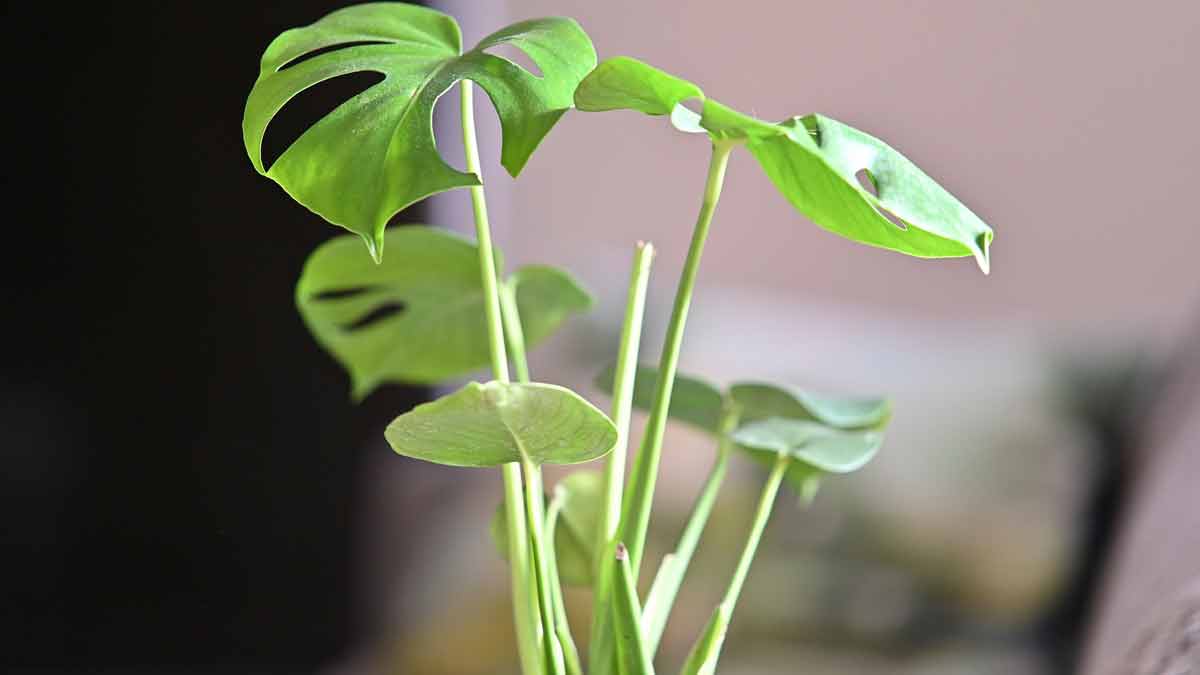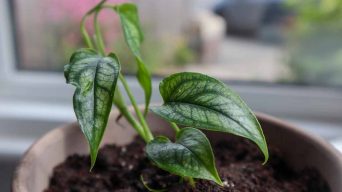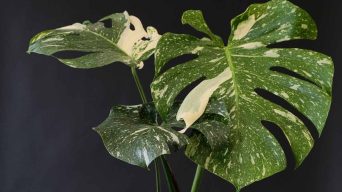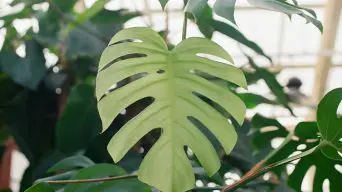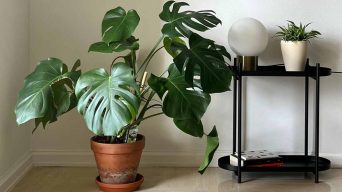To grow a Monstera plant from seed, soak the seeds in warm water for 12-24 hours, plant in well-draining soil, keep moist in a warm, humid, well-lit area, and transplant once established. Germination takes about 2 weeks. It may take longer, and the seeds may not germinate, so be patient and persistent.
Monstera plants are a popular choice for indoor gardening enthusiasts thanks to their unique and attractive leaves.
While buying established plants is an option, growing Monstera from seed can be a rewarding and fulfilling experience.
In this article, we will discuss the different methods of germinating Monstera seeds, planting seedlings, caring for them, and troubleshooting common problems that may arise.
Whether you’re a beginner or a seasoned gardener, we hope this guide will help you successfully grow and enjoy your own Monstera plants.
Understanding Monstera Seeds
Monstera seeds are small, round, and brown. They are harvested from the fruits of the Monstera plant, which is also known as the Swiss Cheese Plant.
The seeds are relatively easy to obtain and can be purchased online or at your local nursery.
When it comes to obtaining good quality Monstera seeds, there are a few things to keep in mind.
Primarily, it is crucial to acquire your seeds from a reliable source. This might involve obtaining them from a reputable seller or harvesting them directly from a well-established and thriving Monstera plant.
When purchasing Monstera seeds, look for reputable sellers who specialize in indoor houseplants.
These sellers will typically have a wide selection of high-quality seeds that have been tested for viability.
Another factor to consider is the age of the seeds.
Freshly harvested Monstera seeds will have the best chance of germinating successfully.
If you’re not able to plant your seeds right away, store them in a cool, dry place until you’re ready to use them.
It’s also worth noting that not all Monstera plants produce viable seeds.
Some plants may produce sterile flowers or only produce male flowers without any Monstera fruit or viable seeds.
It’s also important to follow proper storage techniques for your Monstera seeds.
Store them in a cool, dry place away from direct sunlight until you’re ready to plant them.
Germinating Monstera Seeds
Once you have obtained some viable Monstera seeds, the next step is to germinate them.
There are two common methods used to germinate Monstera seeds: the soaking method and the paper towel method.
Let’s take a closer look at each of these methods in more detail.
1. Soaking Method
The soaking method is a simple way to kickstart the germination process of your Monstera seeds.
o use the soaking method, all you need to do is soak your seeds in water for 12-24 hours. This will help to soften the Monstera seed coat and encourage germination.
To use this method, follow these steps:
- Gather your supplies. You’ll need a container, water, and your Monstera seeds.
- Fill your container with water. Fill your container with room temperature water.
- Add your seeds. Add your Monstera seeds to the container of water.
- Let them soak. Let your seeds soak for 12-24 hours.
- Drain the water. After 12-24 hours, drain the water from the container.
- Plant your seeds. Plant your soaked seeds in soil or another growing medium.
2. Paper Towel Method
The paper towel method is a popular germination technique for Monstera seeds.
To use this method, you’ll dampen a paper towel in lukewarm purified or distilled water (or rainwater if you can get it) and fold it around your Monstera seeds.
The moisture will help to soften the Monstera seed coat and encourage germination.
To use this method, follow these steps:
- Gather your supplies. You’ll need a paper towel, purified or distilled water (or rainwater), and your Monstera seeds.
- Dampen the paper towel. Dampen a paper towel with lukewarm purified or distilled water (or rainwater).
- Fold around seeds. Fold the dampened paper towel around your Monstera seeds.
- Place in a plastic bag. Place the folded paper towel with seeds inside a plastic baggie or container with a lid.
- Wait for germination. Wait for germination, which should take at least ten days before sprouting becomes visible.
- Plant your seedlings. Once the seeds have sprouted, plant them in soil or an appropriate growing medium.
The germination process for Monstera seeds can take anywhere from 10 days to a month. With patience and proper care, you will eventually see your Monstera seedlings sprouting.
Planting Monstera Seedlings
Once you’ve germinated your Monstera seeds, it’s time to move on to planting them.
When planting your Monstera seedlings, there are a few important things to keep in mind.
Monstera plants prefer well-draining soil that is rich in organic matter.
A mixture of peat moss, perlite, and vermiculite is a great choice for starting your seeds.
It’s important to choose a container that allows for good drainage as well – a plastic or ceramic pot with drainage holes works well.
When it comes time to plant your seeds,
- Fill your container about two-thirds of the way full with your potting mix.
- Make sure the soil is moist but not waterlogged before planting.
- Gently place the seeds on top of the soil, spacing them out evenly. If any of the seeds have already sprouted, make sure the sprout is facing up.
- Cover the seeds with a thin layer of soil – no more than 1/4 inch deep – and gently pat down to ensure good contact between the seed and soil.
- Water gently with a spray bottle or watering can until the soil is moist but not saturated.
Monstera plants enjoy warm, humid conditions with temperatures between 70 and 85 degrees Fahrenheit.
They also require bright but indirect light for the best results.
Be sure to keep the soil moist at all times, but be careful not to overwater, as this can lead to root rot.
With proper care and patience, your Monstera seedlings will eventually grow into lush, leafy houseplants that bring life and beauty to any room.
Caring for Monstera Seedlings
Monstera seedlings are delicate and need special care to ensure they thrive.
It’s important to provide them with the right environment and pay attention to their needs throughout the process of germination, planting, and growth.
One of the most tricky parts is maintaining warm and humid growing conditions.
Monstera plants thrive in temperatures between 65-75 degrees Fahrenheit (18-24 degrees Celsius) and require high humidity levels to grow properly.
You can achieve these conditions by placing your container in a warm spot with indirect sunlight – near a window or under grow lights works well.
To increase humidity levels around your seedlings, cover them with a plastic bag or clear plastic dome. This will create a mini greenhouse effect that will help keep moisture levels high.
Be sure to check on your seedlings regularly and remove the cover once they begin to sprout.
It’s important to keep the soil moist but not waterlogged during this process – overwatering can lead to root rot and other issues.
Check on your seedlings every few days and water as needed using a spray bottle or watering can.
Once your Monstera seedlings have established themselves, you can gradually decrease watering frequency as needed.
Your new Monstera plant should be ready to move into its permanent home in no time!
Transplanting Monstera Seedlings
When your Monstera seedlings have reached 3-4 inches in height, it’s time to transplant them into their permanent home.
To transplant your seedlings, follow these steps:
- Choose a container with drainage holes and fill it about halfway full with the same potting mix you used for germinating your seeds.
- Gently remove each seedling from its starting container, taking care to keep all of the roots intact. Depending on how many seedlings you have, you may need to transplant into multiple containers or combine them all into one larger pot.
- Place each seedling in its new home, making sure there is space between each one to allow for proper airflow and growth potential.
- Top off the container with soil and gently pat down to ensure good contact between the roots and soil.
- Water your newly transplanted Monstera seedlings until the soil is moist but not saturated.
- You can also add a diluted liquid fertilizer to your watering schedule at this stage for added nutrition.
Your Monstera seedlings should now be ready to start growing into full-size plants!
With the right care and attention, you’ll soon have lush, leafy houseplants that will bring life and beauty to any space.
Common Issues When Growing Monstera from Seed
While growing Monstera from seed is a rewarding experience, it’s also important to be aware of some common issues that can arise.
Here are some of the most common problems and how to fix them.
Slow Germination
One of the most common issues when growing Monstera from seed is slow germination.
While the seeds should germinate within a month, it’s not uncommon for them to take longer, sometimes up to two months.
If you don’t see any activity within that timespan, don’t panic – just be patient and keep providing the right conditions.
If your Monstera seeds are taking longer than expected to germinate, there are a few things you can do to speed up the process:
- Check the temperature: Monstera seeds need warm temperatures (around 75°F) to germinate properly.
- Keep the soil moist: Make sure your soil stays moist but not waterlogged.
- Use bottom heat: Placing your seeds on top of a heat mat can help speed up germination.
Damping Off
Damping off is a fungal disease that affects young seedlings and can cause them to wilt and die.
It’s caused by overwatering or poor drainage, which creates the perfect environment for fungi to thrive.
To prevent damping off in your Monstera seedlings:
- Use well-draining soil: Make sure your soil isn’t too heavy or compacted.
- Water carefully: Avoid overwatering your seedlings, and make sure excess water drains away.
- Keep air circulating: Good air circulation can help prevent fungal growth.
Leggy Seedlings
Leggy seedlings are those that have long, thin stems with few leaves. This can happen when seedlings are grown in low light or too much heat, causing them to stretch toward the light source.
To prevent leggy seedlings:
- Provide more light: Move your seedlings closer to a bright window or use grow lights.
- Adjust temperature: Keep temperatures between 65-75°F.
- Prune back leggy growth: Once your plant has developed its first set of true leaves, you can snip off any leggy growth with scissors.
Lack of Growth
If your Monstera seeds have sprouted but aren’t growing as quickly as you’d like, there could be several reasons why.
It could be due to a lack of nutrients in the soil, insufficient light or water, or even pests like spider mites or mealybugs.
Make sure you’re providing your plants with everything they need to thrive.
- Check nutrient levels: Make sure your soil has enough nutrients for healthy growth.
- Adjust the watering schedule: Don’t let the soil dry out completely between waterings.
- Inspect for pests: Look for signs of spider mites or mealybugs on leaves and stems.
- Provide more light: Move your plants to a brighter spot or use grow lights.
By following these tips and troubleshooting any issues you encounter, you should be able to successfully grow Monstera from seed and enjoy the rewards that come with it!
Final Thoughts
Once your monstera seeds have germinated and the plant has started to grow, you’ll need to continue taking special care of it.
Be sure to provide plenty of indirect light and water regularly.
Monitor its growth so that you can make adjustments accordingly. If you do these things, your monstera will thrive!
Propagating monstera from seed is an enjoyable experience that can fill any home with greenery and beauty.
With a little patience and know-how, anyone can be successful in growing these amazing plants from seed.
So why not give it a try?
Who knows what kind of beautiful plant might emerge!
Good luck on your journey!

